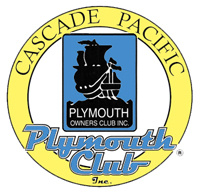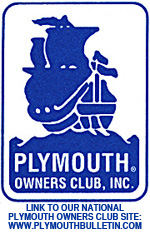Adhesives and Sealants for Vintage Cars
By Phil Lapin / Technical Coordinator
Click on this link to download a PDF file of this article.
With regard to automotive applications, there are many adhesives, fillers and sealants which can be helpful to us in our garages. Most of these products have uses extending far beyond the automotive world, but we will stick with the ones that I find most useful. As owners of vintage autos, there are probably more potential applications of adhesives than on most modern cars. Vintage autos often have metals, plastics and woods which are neither commonly used or readily available today. The use of modern chemistry to repair and enhance our cars can be of great benefit.
Some of the materials that I have found useful are described below - not in any particular order of preference, but rather by the categories they fall within. Better understanding them, and being creative in their use can be a real asset.
Cyanoacrylate Adhesives
These adhesives are more commonly referred to as "CA Adhesives" by frequent users of them. One of the first introductions of this category to the public was "Super Glue". (Loctite is another variation of CA.) When cured, this material forms an acrylic plastic. It is a one part system - in that no catalyst is required for it to cure. There are, however, "accelerators" that can be sprayed on CA glues to cause an almost instant cure.
One of the great advantages of CA products is that they normally will cure very rapidly, minimizing the need for clamps and fixtures to hold parts in place. After curing, the (repaired) pieces can be used immediately. On the negative side is the very real danger of getting skin and fingers bonded by the material. Also of importance is the release of very dangerous gases when large amounts are used. The product is fairly expensive, and has a shelf life of under one year.
CA is very good for bonding parts which are in close contact to one another. It can also be used to fill voids and cracks (especially when fillers are incorporated) This includes metals, ceramics, wood and some types of plastics. It is fairly brittle when thick.
CA glues are sold in a number viscosities. "Medium" is used most often, whereas "thick" is better for filling gaps (with less sagging). "Thin" formulations are like water and will penetrate cracks and voids instantly. Thin is also good for "hardening up" wood which has begun to deteriorate. Wide cracks can be filled with powder or dust from a matching source, then saturated and bonded with thin CA. It can be sanded and polished. Look for CA in woodworking stores or hobby shops.
Resins
Epoxy and Polyester are two common forms of resin used in automotive applications. They are two part systems which must be mixed in a specific ratio of resin and catalyst.
Epoxy resin comes in many forms, with variations in setup time which can range from slow to fast. Compared to CA adhesives, "fast" epoxy is still very slow! Filler materials (powdered metals and such) can also be added to epoxies to enhance strength. It can even be purchased in a putty like formula. J-B Weld is a popular brand that makes filled epoxy of several types. Cast iron, metal to metal, steel, some plastics, woods and other materials can be bonded or filled with epoxy resin based adhesives. Epoxy resins are very commonly available in hardware stores.
Another resin is polyester - commonly used in fiberglass products (polyester resin plus glass cloth). Fiberglass can be used in vintage autos for body repair work, as well as for reinforcing of weak structural areas. Another form of polyester resin uses powdered filler materials - and it is known as "body filler"! Bondo was one of the first brands of this product. Body fillers come in a basic mix, as well as a thinner paste which is for final smoothing and filling. Normal body fillers, because of the additives used, are not totally impervious to moisture. Regular body filler should not be used on rough welds or areas that cannot be sealed. There are special formulas for applications where moisture could be a problem. Polyester resin is available in both automotive and marine supply stores, as well as some hardware stores.
Polyurethane
Another commonly used adhesive is urethane. It is a one part adhesive which interacts with moisture to cure. "Gorilla Glue" is one well known brand. It will bond to many materials, and is waterproof. What I do not like about these materials is that they tend to expand - which can cause oozing out of joints. It is not easy to clean up. A variation of urethane which I have found very useful in auto repairs is the aerosol can form. Hardware stores sell it for sealing cracks and joints in buildings. It works equally well on autos - where it can be used to seal, fill and waterproof difficult to get at voids and openings.
Seam Sealers
Modern vehicles have seam sealants slopped all over joints - some visible, some not. Vintage cars did not have the advantage of these compounds (save for tar materials). Automotive stores carry sealers - both in "caulking tubes" and cans. It is the consistency of toothpaste, and can be spread or brushed on. Setup time is fast, but it works very well. Shrinkage is significant and it cannot be sanded well, but the end product is flexible and can be painted over.
Styrene Adhesives
Basically a synthetic form of rubber, these products squeeze out of a tube and are applied in a heavy coating. They remain somewhat flexible, are waterproof and bond very well to fabrics, rubber, vinyl fabrics and many other surfaces. "Goop" and it's many variants are one well known brand. They produce formulations for household, auto, marine and other applications. "Shoe Goo" is another of their products!


